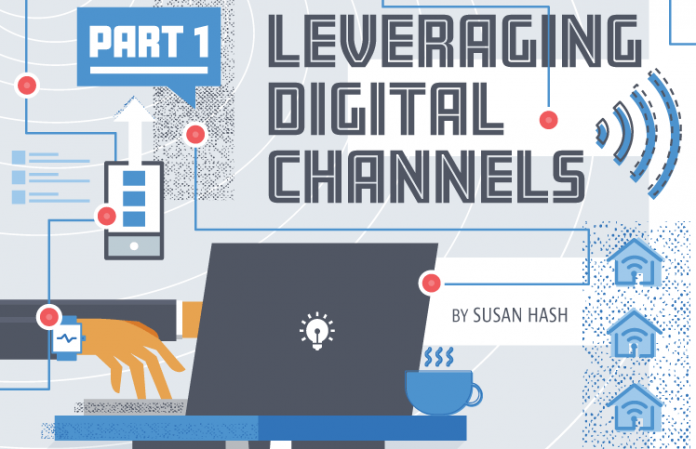
There is no question that skilled agents offer the best opportunity to save unhappy customers who are at risk of leaving. But how do you help customers, and retain them, if you never hear from them?
Today’s tech-savvy customers prefer self-service over phone calls, and they’re more likely to seek answers to their questions within the social and digital communities where they spend their time, regardless of whether or not the business has a presence there. While companies have been expanding their service operations to include more digital channels, many are handling only basic transactions and lack the omnichannel capabilities to ensure a seamless experience for customers.
As products and services grow increasingly complex, siloed channels are adding multiple steps into a customer journey that often ends in frustration. In the past, customers demonstrated their dissatisfaction by taking their business elsewhere. Today, the impact is twofold—lost business and potential damage to the brand from the negative buzz on social media.
IoT Is Complicating Customer Support
The expanding market for connected products is creating a dilemma within support centers. While it’s common for problems to occur when connecting devices from different manufacturers, it’s often unclear to consumers where to turn for help, or for companies to know where to set boundaries when it comes to providing support for third-party products or software.
Home automation companies are already feeling the impact of customer dissatisfaction with product installation even though the market is still in its early days. A recent survey by global managed services provider iQor revealed that a high level of consumer frustration exists. The research found that consumers who purchased smart home devices dealt with an average of 2.1 companies over 2.7 sessions and with 3.1 different people as they attempted to install and engage with the new connected technology in their homes.

On average, survey participants reported having to take more than eight steps to resolve a technical problem or issue with a smart device, according to iQor COO Autumn Braswell. More than half (59%) read the instructions or user manual as the first step to solve an issue. Another 14% turned to friends or family members for help. The typical journey was: read instructions, visit manufacturer’s website, search on Google, explore other websites, call manufacturer’s customer service hotline, and return for repair or replacement.
Reaching out to the service or support center was generally near the middle or end of the process, just before giving up entirely. The study found that 22% of consumers couldn’t resolve the issue and returned the product for a refund, although 15% to 30% of the products returned had nothing wrong with them; for some products, it was as high as 65%.
iQor’s findings are particularly compelling when you consider that the survey demographics were largely comprised of tech-savvy early adopters (participants were included in the research based on the number of connected devices they already owned and used). “It was interesting to see how difficult navigating the connected ecosystem is for tech-savvy consumers,” says Braswell. “The market is quickly transitioning to mainstream adoption of this connected ecosystem. If we don’t solve for a more seamless out-of-the-box experience and deliver service, support, installation and setup in a much more powerful way, we’re going to have a lot of dissatisfied consumers in this space.”
She adds that “the crux of the matter is that companies still view their products and services as point solutions instead of thinking about the entire ecosystem that the devices live in. When I take my connected thermostat out of the box, we can’t just assume that it’s going to work well with the rest of the devices and services within my home. That is the shift in mindset that needs to happen.”
An interesting finding in the iQor survey was that nearly half of consumers (47%) used YouTube as an interim step in the resolution process, and it also ranked highest for effectiveness and convenience. Most of the YouTube videos, Braswell points out, were not produced by home automation companies, but rather were users helping users.
“Companies need to embrace that expert user crowdsourced forum to help fill the support gap, but they also have to step up and create their own content,” Braswell says. She offers a few insights that companies can take away from the research to lessen consumer pain:
- Deliver content in a way that consumers want. Develop an instructional video content strategy.
- Consider how your product instructions or user manual needs to look, or how you can offer content out of the box that provides a more visual experience.
- Keep in mind that the point at which consumers call the contact center is about midway through an eight-step journey. Consider: Does your service strategy provide an omnichannel experience that is seamless, personalized and recognizes where the customer has been, steps he or she has taken, as well as their preferred support method?



